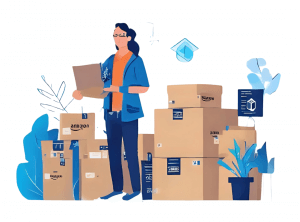Ever wonder what would happen if you turned your child’s weekly allowance into Amazon Gift Cards?
For those of us who don’t like unexpected surprises popping up on a bank statement, this could very well be the best thing since sliced bread. Piggybanks everywhere are bound to agree. But how about third-party sellers?
 Carry on reading to find out how to prepare your business for what’s to come.
Carry on reading to find out how to prepare your business for what’s to come.
Don’t Smash that Piggybank Just Yet!
Amazon decided to roll out a feature that empowers both parents and teens, but limits transactions to products only sold by Amazon. It’s called Amazon Allowance, and it’s made possible thanks to a point-of-sale (POS in tech lingo) shortcut called PayPhrase, which is similar to Google Checkout.
To complete a purchase using an Amazon Allowance, an account holder 13 years of age or older would need to enter a secret phrase (hence the name ‘PayPhrase’) followed by a PIN, and to wait for the parent’s approval. The parent can make one-off or recurring deposits as low as $0.5 or as high as $2,000 per period, approve transactions automatically or one by one, and have any unspent money roll over to the next month.
What This Means for Amazon Sellers
For Amazon sellers, this is also a welcome change. After all, it means a good chunk of brick-and-mortar sales would end up on their income statements. However, they should brace themselves for a few adjustments in terms of:
1. Customer base
Amazon Allowance currently addresses millennials and their children, Generation Z. But it is really setting the scene for the Alpha Generation; these are children with access to tablets, phones and smartwatches, and with an instant ability to transform thought into online activity. These teens are likely to start having their own Amazon Allowance accounts in as little as 5 years.
Alphas will probably live longer, study longer, work longer, and have higher IQs than their forefathers. They will
also be greater in numbers than any other generation, and while they will have more substantial needs than their parents, they’re also likely to be harder to please.
2. Marketing
Amazon sellers may have to rethink a good deal of their marketing strategy, not that there’s much leeway for that on Amazon. Their seller name should be short and catchy, appealing to a teenager, with emphasis on delivery speed and low prices. Their return policies should be student-friendly, with some consideration to their schedule and to local post office opening hours.
They may have to spruce up their product descriptions, as well. These should be brief, to the point, and mobile-friendly. When large inventories are involved, using specialized software to manage them, such as Sellery, is a must.
This type of software can help sort out inventory depending on the type of audience, and change product descriptions or pricing schemes accordingly.
3. Customer service
While there are limitations as to how MFN sellers can communicate with their customers, these barriers will most likely start to fail when teens become full-fledged Amazon customers. Unless Amazon comes up with a more effective way to handle mobile orders, we can expect to see third-party sellers chatting and calling their customers over a monitored Amazon platform in a few years’ time.
It wouldn’t be inconceivable for businesses to start toning down and shortening their replies to customers, optimizing their emails for smaller screens. Hiring younger customer support staff that can relate to teenagers and handle large amounts of incoming communication would also be a wise approach.






One Response
Wow great article!! Really insightful.